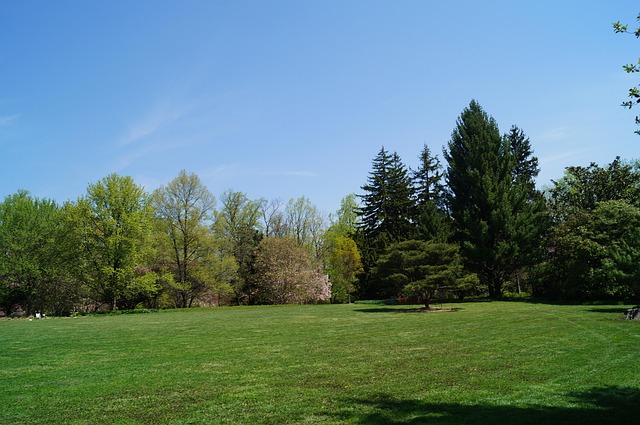Designing or renovating your backyard entertainment area with sustainable materials like recycled plastic lumber, bamboo furniture, eco-friendly textiles, and energy-efficient LED lighting reduces environmental impact while enhancing aesthetics and durability. Water conservation strategies such as drip irrigation systems, drought-tolerant plants, and rainwater harvesting systems further promote sustainability. Choosing native plants and using permeable surfaces contributes to environmental preservation, creating a healthier planet and a more harmonious, nature-connected outdoor space.
Modern outdoor spaces are evolving, with an increasing focus on sustainability and eco-friendliness. As we strive for a greener future, incorporating eco-friendly features into our backyard entertainment areas is both stylish and responsible. This article explores key strategies such as using sustainable materials, adopting energy-efficient lighting solutions, implementing water conservation techniques, and practicing eco-conscious landscaping. Discover how these innovations not only enhance your outdoor living but also contribute to the health of our planet.
Sustainable Materials for a Greener Backyard Entertainment Area
When designing or renovating your backyard entertainment area, selecting sustainable materials is a powerful way to reduce your environmental impact and create a greener space. Opting for eco-friendly options doesn’t mean sacrificing style; instead, it offers an opportunity to embrace natural, timeless aesthetics. Consider using recycled plastic lumber for decking, which is durable and free from harmful chemicals often found in traditional wood treatments. For furniture, bamboo is a fast-growing resource that can be turned into robust and stylish pieces, perfect for al fresco dining or lounging.
These choices not only benefit the planet but also extend the life of your outdoor space. Natural materials are often more resistant to rot and decay, reducing the need for frequent replacements. Additionally, incorporating sustainable textiles, such as organic cotton or recycled polyester, for outdoor cushions and rugs adds comfort while ensuring your backyard entertainment area remains eco-conscious.
Energy-Efficient Lighting Solutions for Outdoor Spaces
Modern outdoor spaces, especially backyard entertainment areas, are evolving to embrace sustainability and eco-friendly features. One prominent way to achieve this is through the integration of energy-efficient lighting solutions. Traditional outdoor lighting often consumes significant amounts of electricity, contributing to environmental impact. However, advancements in technology have led to innovative options that offer both aesthetic appeal and reduced energy consumption.
LED (Light Emitting Diode) lighting is a prime example. These lights are highly efficient, lasting longer than conventional bulbs while using less power. They come in various colors and styles, allowing designers to create captivating outdoor ambiance. Additionally, smart controls enable users to adjust brightness and timing, further optimizing energy use. By adopting these eco-conscious lighting solutions, homeowners can enhance their backyard entertainment areas while minimizing their carbon footprint.
Water Conservation Strategies in Modern Outdoor Design
In modern outdoor design, water conservation strategies are becoming increasingly essential as we look to create sustainable and beautiful spaces, particularly in areas like the backyard entertainment area. Designers are embracing innovative approaches to reduce water usage without compromising aesthetics or functionality. One effective method is the implementation of drip irrigation systems, which deliver water directly to plant roots, minimizing waste by preventing over-spray and evaporation. Additionally, the use of native and drought-tolerant plants not only reduces the need for frequent watering but also provides a diverse habitat for local wildlife.
Another crucial technique involves incorporating rainwater harvesting systems into the design. Collect rainwater from rooftops or designated areas to irrigate gardens, fill water features, or even flush toilets. This not only conserves precious freshwater resources but also reduces the environmental impact of outdoor water usage. Moreover, smart technology is playing a significant role in this shift. Sensors and automated controls allow for precise watering schedules based on weather data and plant needs, ensuring efficient use of every drop.
Eco-Friendly Landscaping Practices for a Healthy Environment
Creating an eco-friendly landscape in your backyard entertainment area isn’t just aesthetically pleasing; it’s a powerful step towards preserving our planet. One of the primary practices is choosing native plants over non-native species. Native flora provides food and shelter for local wildlife, reduces the need for chemical fertilizers and pesticides, and requires less water once established—a win for both your wallet and the environment.
Additionally, opt for sustainable materials when designing your outdoor space. Recycled or composted wood for decks and seating areas, as well as permeable surfaces like gravel or pavers for walkways, can significantly reduce the environmental impact. These practices not only contribute to a healthier planet but also create a more harmonious and attractive backyard entertainment area that connects you to nature in a meaningful way.
Modern outdoor spaces can seamlessly blend comfort and style with eco-conscious design. By incorporating sustainable materials, energy-efficient lighting, water conservation strategies, and environmentally friendly landscaping practices, such as choosing native plants and reducing chemical use, homeowners can transform their backyard entertainment areas into lush oases that benefit both nature and humanity. These simple yet powerful changes contribute to a greener planet, ensuring that outdoor living remains enjoyable for current and future generations.
